|
The “Concord Hymn” by Ralph Waldo Emerson was written for the dedication of the Battle Monument on July 4, 1837 in Concord, Massachusetts. It commemorated the Battle of Concord which took place at the North Bridge at the outbreak of the American Revolution. By the rude bridge that arched the flood, Their flag to April’s breeze unfurled, Here once the embattled farmers stood And fired the shot heard round the world. The foe long since in silence slept; Alike the conqueror silent sleeps; And Time the ruined bridge has swept Down the dark stream which seaward creeps. On this green bank, by this soft stream, We set today a votive stone; That memory may their deed redeem, When, like our sires, our sons are gone. Spirit, that made those heroes dare To die, and leave their children free, Bid Time and Nature gently spare The shaft we raise to them and thee. While visiting relatives in New England last month I had the opportunity to spend time in the towns of Concord and Lexington in Massachusetts. These towns witnessed the opening salvos of the Revolutionary War nearly 250 years ago. On the morning of April 19, 1775 hundreds of British soldiers left Boston and marched toward Concord to capture and destroy stockpiles of gunpowder and military supplies stored by the local militia. Along the way the British soldiers confronted seventy-seven militia men waiting for them on Lexington Green. No one is sure who fired the first shot, but within minutes eight colonial militia men were killed and several more were wounded. The British suffered only one minor casualty and soon resumed their march to Concord. Once in Concord, British soldiers searched homes and barns for military supplies, and burned all that they found. Thinking that the soldiers had set their town on fire, the local militia confronted the British soldiers at the North Bridge. The soldiers fired upon the militia, killing two men and injuring several more. A militia officer ordered his men to return fire and two British soldiers were killed. This was an act of treason against the British government and the spark that ignited the American Revolutionary War. At the Minute Man National Historical Park I joined a guided walk along the Battle Road Trail, part of the colonial Bay Road where several battles and skirmishes took place on that fateful day in 1775. As we walked along the woodland path lined with maple, oak and beech trees alight in their colorful autumn splendor, it has hard to imagine the enormity of the events that had taken place here. But a black cloud hung over New England that day, as was the case on April 19, 1775. The news of a horrific mass shooting in Lewiston, Maine the previous night was being reported, and the details of the carnage were being updated throughout the day. An Army reservist with a history of mental illness had killed eighteen people and wounded thirteen others using an AR-10 assault rifle. Walking along Battle Road that day, I couldn’t stop thinking about the senseless slaughter of innocent people that took place the previous night. Sometime later I came to the realization that the mass shooting in Maine was somehow rooted in the events that took place in Concord in 1775. The local militias in Concord, Lexington, and surrounding communities had effectively repelled professional soldiers of an overseas king. There was no going back. Colonial Militias: In colonial times a militia represented a military force raised from the civilian population, for the common defense of the community. Militias were distinct from professional soldiers, and were generally organized around towns, regions, or colonies. Members of Massachusetts militias were required to possess and be skilled in the use of a musket, powder, and shot. Local militia units from all of the thirteen original colonies were the backbone of George Washington’s army during the Revolutionary War. The “Militia Act of 1792” stipulated that the militia would consist of each and every able-bodied white male citizen of the respective States, who is at least 18 years of age and under the age of 45. At the start of our new republic, the founding fathers feared that a standing army could be used to suppress the liberties of the citizens, and therefore opposed the formation of one. But they needed to provide for the common defense, and saw the state and local militias as a necessary compromise. It should therefore be no surprise that armed militias were enshrined in the U.S. Constitution. Second Amendment: The 2nd Amendment to the Constitution was adopted in 1791. It states “A well regulated Militia, being necessary to the security of a free State, the right of the people to keep and bear Arms, shall not be infringed”. A lot has changed in the United States since the Second Amendment was adopted. The traditional concept of a civilian based militia no longer exists, and state-based militia organizations have been incorporated into the federal military structure. You can find more information on the history of militias in the United States in one of my previous blog posts. Repeal or Replace the 2nd Amendment: If I was king for a day, I would do away with the 2nd Amendment. That is not to say that I would abolish all access to guns by law abiding citizens. There are legitimate reasons, such as sport and personal protection, for citizens to have access to certain types of guns. But I am convinced that meaningful gun control legislation cannot happen in this country without repealing or replacing the 2nd Amendment. The 2nd Amendment is why we have metal detectors and security guards in schools. It is why mass shootings are common place, and citizens are allowed to parade around openly carrying military style assault weapons. The 2nd Amendment justifies use of military grade armaments and tactics by law enforcement. The 2nd Amendment has given rise to the NRA and other pro-gun lobbies which have corrupted our political system. The 2nd Amendment has had a damaging impact on modern American society. Short of amending the Constitution, guns are here to stay. Fortunately, even the most conservative courts acknowledge that gun regulation does not violate the Second Amendment. Even without amending the Constitution there are some common-sense things that Congress can do. Common Sense Gun Reform Measures: (For more detail on these gun reforms refer to Part 4 of my blog series, Guns in America.
The violent manner in which this country was founded has repercussions to this very day. The events at Concord and Lexington on April 19, 1775 cemented the use of fire arms by the civilian population in America. The 2nd Amendment enshrines it in our Constitution, and our conservative Supreme Court will see to it that this doesn’t change anytime soon. Approximately 42% of American households own at least one gun, and there are reportedly more guns in this country than there are people. Clearly gun ownership is a cultural issue, and it takes a lot of time to change cultural norms. But gun regulation is not a cultural issue. It is a legal and political issue, which can be influenced by the courage and will of the people. No matter where you stand on the gun control issue, I think we can all agree that something needs to be done to reduce gun violence in America. For the sake of the grieving families in Lewiston, Maine, let’s hold Congress accountable for not taking action on meaningful gun reform. If you enjoy reading this type of commentary please subscribe to my blog and tell a friend. You will receive an email notification when new blogs are posted. The email will come from the site’s email: [email protected].
Thanks, Armchair American
1 Comment
Congressional leaders are patting themselves on the back for passing a bipartisan bill on new gun regulations. But even before the President signed the bill into law, the Supreme Court overruled a New York law which will make it easier for Americans to own and carry a gun in public. The Republicans view the epidemic of gun violence as a mental illness problem, not as a gun problem. The Democrats’ hopes for meaningful gun reform have been vanquished for the foreseeable future by the Supreme Court’s rigid interpretation of the 2nd Amendment. Let’s take a look at recent developments. Bipartisan Safer Communities Act: (https://www.murphy.senate.gov/imo/media/doc/bipartisan_safer_communities_act_one_pager.pdf) This bill was signed into law by President Biden on June 25, 2022. Here are the highlights of the new law:
The compromise bill (it is actually more of a capitulation) is seen as a victory by the Democrats who have been working for decades on gun safety legislation. I see the new law as another failure of the Congress to enact meaningful gun reforms. It is little more than a tiny band-aid on a gaping wound that won’t be healed until the 2nd Amendment is repealed or replaced. Supreme Court Strikes Down New York Gun Law: On June 23, 2022 the Supreme Court ruled in favor of the New York State Rifle and Pistol Association, https://www.supremecourt.gov/opinions/21pdf/20-843_7j80.pdf. The Court’s decision overrules a New York law that required adults seeking a permit to carry a concealed weapon in public to demonstrate a need to do so. The Court ruled that the 2nd Amendment provides a broad right of the individual to arm themselves in public, and New York (or any other state) cannot place restrictions on that right. According to the Court’s majority opinion, written by Clarence Thomas, the 2nd Amendment protects “an individual’s right to carry a handgun for self-defense outside the home.” He went on to write that “The government must demonstrate that the regulation is consistent with the nation’s historical tradition of firearm regulations.” This decision has ramifications throughout the country, and will bring legal challenges to any current or future gun control measures enacted by the states. The direction of the Supreme Court on gun regulations is now clear. The 2nd Amendment right of the individual to own and bear arms is chiseled in stone, and states have limited authority to restrict that right. America’s Gun Problem: As much as the Republican Party would like you to believe, the mental health system cannot stop mass shootings in America. Only a small fraction of mass shootings are conducted by people with mental illness. It is very difficult to determine who will commit gun violence, and to focus too much on mental health is a mistake. There are volumes of good research on gun violence conducted by the Rand Corporation, the Johns Hopkins Bloomberg School of Public Health, and many others, if you care to look. David Brooks wrote an interesting article recently, titled “Why Mass Shooters Do the Evil They Do”. I found it very interesting, https://www.nytimes.com/2022/07/07/opinion/mass-shooters-motive.html. The only thing that connects all perpetrators of gun violence is access to guns, and America is awash in them. All of the guns used in the high-profile mass shootings this summer were purchased legally. The mental health system cannot solve this problem. If the “Bipartisan Safer Communities Act” is the best that Congress can deliver, we might as well add “gun violence” to the other certainties of American life, “death and taxes”. Don’t let your member of Congress use this new law as an excuse to rest on their laurels. Americans deserve to be safe when they go to school, walk down the street, shop at a grocery store, or attend a 4th of July parade. Teenager Drinking BeerOne of these two activities is illegal. Which do you think poses the biggest threat to your family? If you enjoy reading this type of commentary please subscribe to my blog and tell a friend. You will receive an email notification when new blogs are posted. The email will come from the site’s email: armchairamerican1776 @gmail.com.
Thanks, Armchair American For the past several weeks I have been traveling and taking care of family business on the East Coast. During that time, I didn’t read any newspapers, watch TV news, or scour the internet. But during my self-imposed news blackout I couldn’t avoid the sickening stench of gun violence which has brought our country to its knees. The recent mass shootings in Buffalo, Uvalde, Tulsa, Philadelphia, and Chattanooga have shaken the country to the core. But these recent gun deaths represent only a tiny fraction of the nearly 19,000 that have already occurred this year in the United States. The numbers are staggering. Since the beginning of 2019, over 147,000 people have been killed in this country by guns, https://www.gunviolencearchive.org/. Contrast that number to the combined total of U.S. combat deaths in the Korean, Vietnam, Gulf, Iraq, and Afghanistan wars of 86,698. There have been several times more civilian deaths in the United States by guns than the total civilian casualty rate in Ukraine since the Russian invasion. Ukraine is an active war zone, but the United States is at “peace”. The laws in the United States allow the carnage wrought from guns, and make our streets more dangerous, not safer. The shooters in Buffalo and Uvalde obtained their military style assault weapons legally. The twisted interpretation of the 2nd Amendment and the religious fervor in which gun rights are defended, have brought the country to this sorry state of affairs. I have written extensively on the 2nd Amendment and other gun related issues in my four-part blog series, “Guns in America”. I will not repeat myself here. You can follow this link if you are interested in revisiting the series, https://armchairamerican.com/blog/guns-in-america-part-4-common-sense-gun-reforms. Arming the “good guys” is a juvenile and pathetic response by some on the right. Here is a list of some of the reforms that I advocate for:
Will the politicians finally find the courage to enact meaningful gun control legislation? I’m not optimistic. If the national sickness of gun violence isn’t curtailed (it will never be stopped completely), it will continue to weaken the moral fabric of our country. We can’t let that happen. The worse thing that we as citizens can do is to become numb to gun violence. We need to let our politicians at the state and federal levels know that enough is enough, and it is time to end the national nightmare of gun violence. If you enjoy reading this type of commentary please subscribe to my blog and tell a friend. You will receive an email notification when new blogs are posted. The email will come from the site’s email: armchairamerican1776 @gmail.com.
Thanks, Armchair American Last week Kyle Rittenhouse was acquitted of all five charges for fatally shooting two people and wounding a third during protests in Kenosha, Wisconsin on August 25, 2020. Rittenhouse’s defense team successfully argued that he acted in self-defense. I have no issue with the verdict in this case. But I do have an issue with a system that allows a teenage boy (or anyone else) to openly carry a loaded assault style weapon at a public protest and legally use it on a public street for self-defense. Gun rights advocates are hailing the verdict as a victory. Two men were shot dead in the streets of Wisconsin and this is a good thing for America? Those men would be alive today if Kyle Rittenhouse had not been openly carrying a gun that night. Will his acquittal embolden similar behavior, and will vigilante actions be justified in the name of gun rights and the right to self-defense? Kyle Rittenhouse is not a hero, and any attempts to make him one should be discouraged. He is a naive young man who was caught up in a situation he should never been a party to. He went to Kenosha with an illegally obtained AR-15 assault rifle, ostensibly to protect private property during protest marches. He was acting as a vigilante, buoyed by lax (or non-existent) open-carry laws which allows such behavior. In my view, openly carrying an assault weapon in public is an act of aggression, or at the very least, an act of intimidation. Rather than promote safety, it increases the chances of violence and armed confrontations. Do we want to give armed vigilante groups the same privileges we give to trained police officers, and allow them to patrol our streets? For the sake of our country, I hope not. The ability to defend oneself against threats is codified in law and has come to mean different things in different states, https://www.ncsl.org/research/civil-and-criminal-justice/self-defense-and-stand-your-ground.aspx. Self-defense laws allow an individual to use force against another to prevent imminent bodily injury to yourself or others. As seen in the Kyle Rittenhouse case, you can legally use deadly force to protect yourself when there is a real, or perceived, physical threat to your person. When you combine the right to self-defense with open-carry laws, the result is armed confrontation with deadly results. Liberal open-carry laws encourage armed confrontations on our streets. They promote individual rights over the good of society, and make our streets less safe. How would you feel if you saw a person walking down the street carrying an assault weapon? You would most likely fear for your safety and get away from that area. Your right of free movement on a public street or public place has been denied to you. Where is the justice in that? The right to own and bear arms in this country has morphed into any gun, anytime, anywhere. This individual right has been allowed to supersede public safety and the well-being of society as a whole. This is not how strong societies are built. It is how they fracture and fail. Anyone who has read my four- part blog series on “Guns in America” knows that I am not a big fan of the 2nd Amendment to the U.S. Constitution. It has become so twisted that the framers of the Constitution wouldn’t recognize it. The 2nd Amendment right to keep and bear arms was intended to keep the citizenry safe from tyrannical governments. But citizens no longer use their personnel weapons for militia (military) duty. The 2nd Amendment has not kept pace with the needs of a modern industrialized nation. As a result, we are awash in guns of all types, and the sales of guns and ammunition are at record levels. The tyranny that we now face is caused by gun violence and individualism over societal good.
Do guns make our society safer? The grim statistics don’t bear this out, and I feel that the Kyle Rittenhouse case will make it worse. Even attempts at the most moderate and common-sense gun regulations cannot get through Congress. The only way out of this sorry state of affairs is to repeal or replace the 2nd Amendment. Unfortunately, I don’t think that will happen in my lifetime. If you are interested in learning more about open-carry laws in the United States, follow this link https://giffords.org/lawcenter/gun-laws/policy-areas/guns-in-public/open-carry/. If you enjoy reading this type of commentary please subscribe to my blog and tell a friend. You will receive an email notification when new blogs are posted. The email will come from the site’s email: armchairamerican1776 @gmail.com. Thanks, Armchair American This is the fourth and final blog on my series “Guns in America”. I could have written ten parts on this subject and have barely scratched the surface. I have explored the constitutional issues surrounding gun ownership, the influence of the NRA on the political debate, and the history of gun laws in this country. This blog will highlight what I feel are some common-sense reforms that could possibly lessen gun violence in America. America is special in many ways, and the freedoms that we enjoy as citizens make us the envy of the world. When certain freedoms are abused, they may lead to unintended consequences and have a detrimental impact on society as a whole. The 2nd Amendment right to keep and bear arms was intended to keep the citizenry safe from tyrannical governments. But this freedom has created a whole new set of tyrannies. It has created a tyranny of violence, political corruption, and a tyranny of individualism over societal good. The United States gun homicide rate is 25 times higher than other high-income countries https://everytownresearch.org/report/gun-violence-in-america/. Every day in this country more than 100 Americans are killed with guns, and more than 230 are shot and wounded. Firearms are the leading cause of death for American children and teens. Access to guns triples the risk of death by suicide, and doubles the risk of death by homicide. These are grim statistics indeed, so why don’t we just rewrite or repeal the 2nd Amendment? Repeal or Replace the 2nd Amendment: If I was king for a day, I would do away with the 2nd Amendment. That is not to say that I would abolish all access to guns by law abiding citizens. There are legitimate reasons, such as sport and personal protection, for citizens to have access to certain types of guns. But I am convinced that meaningful gun control legislation cannot happen in this country without repealing or replacing the 2nd Amendment. The 2nd Amendment is why we have metal detectors and security guards in schools. It is why mass shootings are common place, and citizens are allowed to parade around openly carrying military style assault weapons. The 2nd Amendment justifies use of military grade armaments and tactics by law enforcement. The 2nd Amendment has given rise to the NRA and other pro-gun lobbies which have corrupted our political system. The 2nd Amendment has had a negative impact on modern American society. There has never been a serious attempt to repeal or replace the 2nd Amendment. Amending the Constitution is very difficult, even more so in the hyper-partisan environment of today. To amend the Constitution requires approval by two-thirds of the members of the House and the Senate before being ratified by three-quarters of the States. If the States so choose, they can bypass the Congress, establish a Constitutional Convention, and propose amendments to the Constitution. This would require two-thirds of the States to agree to the convention, and three-quarters of the States to ratify any amendment. Getting two-thirds of the Congress and three-quarters of the States to agree on something as contentious as the 2nd Amendment is not going to happen any time soon. But not all is lost. Even without amending the Constitution there are some common-sense things that Congress can do, and public opinion is shifting in the direction of gun reform. Fifty-seven percent of Americans say that the laws covering the sale of firearms should be stricter https://news.gallup.com/opinion/polling-matters/343649/american-public-opinion-gun-violence.aspx. There is strong public support for background checks for all gun purchases, bans on high-capacity magazines, registration of all privately owned guns, and 30-day waiting periods for all gun sales. Common Sense Gun Reform Measures:
Approximately 42% of American households own at least one gun, and there are reportedly more guns in this country than there are people. Clearly gun ownership is a cultural issue, and it takes a lot of time to change cultural norms. But gun regulation is not a cultural issue. It is a legal and political issue, which can be influenced by the courage and will of the people. No matter where you stand on the gun control issue, I think we can all agree that something needs to be done to reduce gun violence in America. Here are some of the major groups that are advocating for there point of view in the gun debate: Gun Rights Groups:
Gun Control Groups:
The debate on guns will certainly outlive me, but it is a debate worth having. Stay informed and let your political leaders know how you feel on this important issue. The worse thing that can happen is if we become numb to all of the gun violence, and chalk it up to the price of freedom. We deserve better. In the immortal words of Edmund Burke, “The only thing necessary for the triumph of evil is for good men to do nothing”. If you enjoy reading this type of commentary please subscribe to my blog and tell a friend. You will receive an email notification when new blogs are posted. The email will come from the site’s email: [email protected].
Thanks, Armchair American In the past two parts of “Guns in America”, I examined the constitutionality of private gun ownership, and the influence of the National Rifle Association on gun control legislation. In this blog I will review gun control legislation over the history of our country and where we stand on the issue today. In the first part of this blog series, I explained how recent Supreme Court rulings clearly state that government at the local, state, and federal levels does not have the authority to take away a right granted by the Second Amendment. Specifically, the right to keep and bear arms. But these same court decisions stated that the right to bear arms is subject to regulations. There have been several federal laws throughout the history of our country which put restrictions on firearms. Here is a chronological list of the major gun regulation laws in the United States: 1927 Nonmailable Firearms Act of 1927: https://www.loc.gov/law/help/statutes-at-large/69th-congress/session-2/c69s2ch75.pdf. This law made it illegal to use the U.S. mail to ship pistols, revolvers, and other firearms “capable of being concealed on the person”. Exceptions were made for the military and police. 1934 National Firearms Act (NFA): https://www.loc.gov/law/help/statutes-at-large/73rd-congress/session-2/c73s2ch757.pdf. Passed on June 26, 1934, this was the first national gun control legislation. The NFA was enacted to curtail gangland violence of the era, such as the St. Valentine’s Day Massacre. The law established a category of guns and devices which required registration, and were highly taxed to limit their manufacture, transport and sale. This new category included machine guns, short-barreled rifles, short-barreled shotguns, silencers, and concealable weapons other than pistols and revolvers. This legislation was supported by the NRA. 1938 Federal Firearms Act of 1938 (FFA): https://homicide.northwestern.edu/docs_fk/homicide/laws/national_firearms_act_of_1938.pdf This law required gun manufacturers, importers, and dealers to obtain a federal firearms license. The FFA also mandated that gun sellers keep records of customers and banned sales of guns to convicted felons. This law was supported by the NRA. 1968 Gun Control Act of 1968 (GCA): https://www.govinfo.gov/content/pkg/STATUTE-82/pdf/STATUTE-82-Pg1213-2.pdf. The GCA was enacted in response to the assassinations of President Kennedy, Martin Luther King Jr., and Senator Robert Kennedy. It repealed and replaced the FFA and updated the NFA. The law banned the importation of certain guns, imposed a minimum age of 21 to purchase a handgun, prohibited felons and the mentally ill from purchasing guns, required all manufactured or imported guns to have a serial number, and put tighter restrictions on the firearms industry. The GCA prohibits interstate firearms transfers except by manufacturers, dealers and importers licensed under the act. The provisions of this law were to be enforced by the Bureau of Alcohol, Tobacco, and Firearms Division (ATF) of the IRS. The GCA was mostly opposed by the NRA except for the provision preventing felons and the mentally ill from owning guns. 1972 The ATF was established as an independent bureau within the Department of the Treasury. It was no longer under the purview of the IRS. 1986 Firearm Owners’ Protection Act: https://www.govinfo.gov/content/pkg/STATUTE-100/pdf/STATUTE-100-Pg449.pdf. The NRA influenced the writing of this bill and pushed for its passage. The law mostly enacted protections for gun owners, but it did expand the definition of “silencer” to include parts intended to make silencers. It limited ATF inspections of gun sellers to once a year, loosened regulations on the sale and transfer of ammunition, prohibited the government from establishing a national registry of gun owners, and permitted gun dealers, importers and manufacturers to do business at temporary locations, such as gun shows. 1993 Brady Handgun Violence Prevention Act: https://www.congress.gov/103/bills/hr1025/BILLS-103hr1025enr.pdf. Also known as the “Brady Bill”, it was signed into law in November of 1993 despite fierce opposition from the NRA. It was named after James Brady who was shot and seriously wounded during an assassination attempt on President Ronald Reagan. The Brady Bill established the “National Instant Criminal Background Check System”, and requires that background checks be completed before a gun is purchased from a licensed dealer, manufacturer or importer. 1994 Violent Crime Control and Law Enforcement Act of 1994: https://www.govinfo.gov/content/pkg/BILLS-103hr3355enr/pdf/BILLS-103hr3355enr.pdf. This is the largest crime bill in the history of the United States. The most significant section for our discussion is Title XI, Subtitle A on assault weapons. This section of the law banned the manufacture, transfer or possession of nineteen specific semi-automatic firearms classified as “assault weapons”, as well as any semi-automatic rifle, pistol or shotgun capable of accepting a detachable magazine that has two or more features characteristic of such weapons. These features included telescoping or folding stocks, pistol grips, flash suppressors, grenade launchers, and bayonet lags. The Brady Bill also banned possession of newly manufactured magazines capable of holding more than ten rounds of ammunition. The law did not ban lawfully possessed assault weapons manufactured prior to the enactment of the law. As you might expect, the Brady Bill was loudly opposed by the NRA. Due to a sunset clause in the bill, the assault weapons ban expired on September 13, 2004, and has not been renewed. 2002 Homeland Security Act of 2002: https://www.dhs.gov/homeland-security-act-2002. Among many other things, this law shifted the ATF from the Department of the Treasury to the Department of Justice. The agency’s name was changed to the “Bureau of Alcohol, Tobacco, Firearms and Explosives”, but it is still referred to as the “ATF”. 2003 Tiahrt Amendments: https://giffords.org/lawcenter/gun-laws/policy-areas/other-laws-policies/tiahrt-amendments/. These are provisions attached to the U.S. Department of Justice appropriations bills every year since 2003. These amendments accomplish the following:
2004 Assault Weapons Ban: Expired on September 13, 2004. 2005 Protection of Lawful Commerce in Arms Act: https://www.congress.gov/109/plaws/publ92/PLAW-109publ92.pdf. This NRA supported law prohibits gun and ammunition manufacturers, distributors, dealers, and importers from being named in federal or state civil lawsuits when crimes are committed involving their firearms. 2013 Assault Weapons Ban of 2013: https://www.congress.gov/bill/113th-congress/senate-bill/150. This bill was introduced by Senator Dianne Feinstein (D-California) one month after the Sandy Hook Elementary School Shooting, https://www.history.com/this-day-in-history/gunman-kills-students-and-adults-at-newtown-connecticut-elementary-school. With the help of the NRA, the bill was defeated in the Senate by a vote of 40-60. It was the last piece of gun control legislation to be voted on in the Senate. New Push for Gun Control: 2021 brought a new Democrat Administration to the White House, and a flood of gun violence to the streets of America. As I wrote in Part 2 of “Guns in America”, President Biden is coming under increasing pressure from his party to do something about gun violence. But short of fine-tuning existing laws through executive actions, there isn’t much that he can do without Congress. The Biden Administration is focused on infrastructure spending, green initiatives, border issues, the COVID-19 pandemic, and now his recently announced American Families Plan. With all this on the table President Biden doesn’t appear to be willing to spend any of the little political capital he has remaining on any gun control measures. With a very slim Democrat majority in both Houses of Congress, gun control legislation cannot move forward without Republican support. The House passed the following two pieces of gun legislation in March:
Both of these bills were passed by the House of Representatives and are common-sense measures. The existing federal laws leave dangerous loopholes in existing background check requirements, and these two bills would close the loopholes. Senate Majority Leader Chuck Shummer said that the bills will be voted on in the Senate. It will be an uphill battle to secure the 60 votes needed to pass either of these bills, but there is a chance. The NRA is no longer the feared institution that it once was, and universal background checks are favored by the majority of Americans. Hopefully we won’t have to wait long for a Senate vote. Any movement by the Congress to prevent guns from getting into the wrong hands will be an important step in breaking the logjam of inaction. In Part 4 of “Guns in America”, I will discuss what can be done about all the gun violence, and see if there are any common-sense approaches that should be considered.
If you enjoy reading this type of commentary please subscribe to my blog and tell a friend. You will receive an email notification when new blogs are posted. The email will come from the site’s email: [email protected]. Thanks, Armchair American In Part 1 of “Guns in America”, I examined the current thinking on the Second Amendment to the Constitution. It is now clear, at least to me, that most American adults have an individual right to own guns. America is awash in guns, gun violence continues unabated, and many in Congress will block any attempt at meaningful gun control legislation. No other organization in America has had more impact on the debate over guns than the American Rifle Association (NRA). The NRA has advocated for the rights of gun owners for over a century, and has become a political juggernaut in defense of these rights. This blog will examine the rise of the NRA and its ability to influence the debate on gun control. But first, there have been a few recent developments in the past several days that I would be remise if I didn’t mention. The Biden Administration Addresses Gun Violence: Under pressure from the left to address the rash of recent gun violence, the Biden Administration on April 7, 2021 released some actions that it would take, https://www.whitehouse.gov/briefing-room/statements-releases/2021/04/07/fact-sheet-biden-harris-administration-announces-initial-actions-to-address-the-gun-violence-public-health-epidemic/. The President understands that he doesn’t have the votes in Congress to pass meaningful gun legislation. He will therefore work through his Department of Justice (DOJ) to at least tighten up some regulations under existing law. Here is what the DOJ plans to do:
Mass Shootings Aren’t the Main Problem: In the days since my last blog post there have been more mass shootings leading to multiple deaths. As I began to write this blog the country learned of a mass shooting at a FedEx facility in Indianapolis, where a lone gunman killed eight, and injured several others before turning the gun on himself. Another incident involved an ex-NFL player who killed six, including himself, in South Carolina. Mass shootings are horrific and make the news. But we never hear about the vast majority of deaths and injuries caused by gun violence in this country. For example, in 2019 only about one out of every 400 gun deaths was the result of a mass shooting. According to the “Gun Violence Archive”, https://www.gunviolencearchive.org/past-tolls, there were 43,546 deaths and 39,434 injuries due to gun violence in 2020. Of these deaths, more than 50% were from suicides. Accidental shootings and incidents involving a single victim, are far more common than mass shootings. Beginnings of the NRA: The NRA was founded in 1871 by two former civil war officers to “promote and encourage rifle shooting on a scientific basis”, https://home.nra.org/about-the-nra/. After receiving a charter in the state of New York, the organization quickly built a firing range and sponsored annual shooting matches. Starting in the early 1900s, the NRA began promoting shooting sports among America’s youth and helped to establish rifle clubs at all major colleges, universities, and military academies. Even today, youth programs are still a cornerstone of the NRA, with over one million youth participating in NRA shooting sports events. The NRA works with groups such as the 4-H, Boy Scouts, American Legion, Royal Rangers, National Rodeo Association, and others. The organization has several publications, most notably “The American Rifleman”, and “The American Hunter”, and maintains a commitment to training, education, and marksmanship. But all of this is overshadowed by its political work as the nation’s preeminent gun rights organization. The NRA Gets Political: The NRA was in existence for nearly 100 years before it really began to flex its muscles in Washington D.C.
NRA Lobbying Efforts: The NRA lobbies against all forms of gun control at the local, state, and federal levels. Since 1998 the NRA-PVF has consistently ranked among the top spenders in congressional races. The NRA is one of the most powerful lobbying groups in Washington D.C. You’d be hard pressed to find a Republican member of Congress who hasn’t received funds from the NRA during their career. A significant number of Democrats have also been at the receiving end of the NRA’s largess. Here is a link to a list of recent congressional candidates who received campaign money from the NRA, https://en.wikipedia.org/wiki/List_of_congressional_candidates_who_received_campaign_money_from_the_National_Rifle_Association. In 2016, the NRA spent $412 million on political activities, and that didn’t even include the money spent by its political action committee! In addition to its financial muscle, the NRA has the ability to mobilize its large membership, estimated to be between 3-5 million. According to the NRA, its membership reached 5.5 million members in 2018, and membership dues were over $170 million. Membership fees account for less than half of the NRA’s income, with the majority coming from contributions, grants, royalties, and advertising. NRA Aligns With GOP: The NRA endorsed a presidential candidate for the first time in 1980, helping GOP candidate Ronald Reagan defeat Jimmy Carter. The NRA solidified its ties with the Republican Party in the 1990’s, and House Republican leader Newt Gingrich stated that support for or against gun control defined one’s partisan identity. The NRA endorsed Donald Trump in the 2016 presidential election, reportedly spending over $30 million in his support. NRA Faces Legal and Financial Troubles: Last August the New York Attorney General filed a civil lawsuit against the NRA alleging fraud, financial misconduct, and misuse of charitable funds by some of its executives, including Wayne La Pierre, https://ag.ny.gov/press-release/2020/attorney-general-james-files-lawsuit-dissolve-nra. Mr. La Pierre has been the NRA’s executive vice president since 1991 and functions as the chief executive officer. The New York lawsuit calls for the dissolution of the NRA. On the same day, the Attorney General of Washington D.C. filed a lawsuit against the NRA for misusing charitable funds, https://oag.dc.gov/sites/default/files/2020-08/NRA-Foundation-Complaint-Redacted.pdf. It is alleged that some executives of the NRA have used charitable funds to enrich themselves and have diverted funds for uses other than what they were intended. In January of this year the NRA filed for Chapter 11 bankruptcy in the U.S. Bankruptcy Court for the Northern District of Texas in Dallas, https://www.reuters.com/article/us-usa-guns/national-rifle-association-files-for-bankruptcy-seeking-to-escape-new-york-lawsuit-idUSKBN29K2LV. It also announced that it would reincorporate in Texas, subject to the approval of the court. The NRA contends that its Chapter 11 filing is a legitimate maneuver to facilitate a move to a state more friendly to its organization. The New York Attorney General claims that it is a ploy to escape accountability in New York. The bankruptcy case is currently underway in Texas, and the civil lawsuits will hobble the NRA for months, if not years, to come. The New Yorker has several great articles about the financial problems of the NRA, https://www.newyorker.com/news/news-desk/secrecy-self-dealing-and-greed-at-the-nra. The NRA is Weakened, But Not Their Message: The NRA will emerge leaner and with new faces in leadership positions. Even though the NRA has fallen from its lofty perch and is not as powerful as it once was, its pro-gun rights message still permeates the halls of Congress. According to the NRA, membership has risen by 140,000 members since the election over fears that the Biden administration will enact tighter gun control measures. NRA President Caroline Meadows recently stated “The NRA has never been stronger or more critical to the fight for Second Amendment freedom”. We will see if she is singing the same tune at the conclusion of the bankruptcy trial and the civil lawsuits. The constituency that the NRA has developed still exists, and will continue to exist even without the NRA. With the current troubles plaquing the NRA, new pro-gun rights groups will grow and come to prominence. Many advocates of gun control fear that these groups will be even more right-wing than the NRA, some of which have been growing rapidly in recent years. They include the Virginia Citizens Defense League, the Second Amendment Foundation, and the National Association for Gun Rights. The GOP is a strong advocate of Second Amendment rights, and with a narrow majority in Congress the Biden Administration is hesitant about spending any political capital to push through new gun control legislation. With all the senseless gun violence in this country you would think that lawmakers could come together and enact some meaningful measures to stem the violence. But if history is any guide, this is not about to happen anytime soon. Gun rights advocates see ANY gun control measure as a slippery slope towards repealing their Second Amendment rights. With or without the NRA, this view is well entrenched in Washington D.C. and across America. It may require a new generation of leaders and activists to get us out of this mess. In my next blog I will examine the gun control legislation that has been enacted over the years, and the long road ahead in the fight to stop gun violence in America. If you enjoy reading this type of commentary please subscribe to my blog and tell a friend. You will receive an email notification when new blogs are posted. The email will come from the site’s email: [email protected].
Thanks, Armchair American Mass shootings have unfortunately been much in the news lately, followed by a clamor on the political left to enact new gun control legislation. The month of March alone saw 47 mass shooting events, involving four or more victims. Two of the most heinous of these shootings involved a lone gunman who killed ten people at a grocery store in Colorado, and the other involved a lone gunman who killed eight people at massage parlors in suburban Atlanta. During the first three months of 2021, the country has experienced 123 mass shootings, leaving 144 dead, and over 375 wounded https://www.gunviolencearchive.org/. These grim statistics prompted me to write a multipart blog series on “Guns in America”. This first blog will be a review of the constitutionality of guns, followed by an examination of the NRA, common sense gun control, and other topics surrounding this hot button issue. I am not a gun owner. The only gun that I ever owned was a Daisy Winchester BB gun that I got for Christmas when I was 13. Fortunately, I never shot my eye out, and I had great fun target shooting in my backyard and “hunting” in the woods behind my house. I have no issue with the private ownership of certain types of guns. But the epidemic of gun violence and the easy access to military style assault weapons needs a thoughtful examination by the citizens of this country. Guns have been in America since the arrival of the first Europeans. The legal foundation for gun possession is imbedded in the Second Amendment to the Constitution, so let’s start there. Second Amendment: “A well regulated militia, being necessary to the security of a free State, the right of the people to keep and bear arms, shall not be infringed”. No other sentence in the Constitution has elicited more debate. Volumes have been written about the legality with respect to regulation of the purchase, possession, and transportation of firearms. Since I am not a lawyer, it is not my intention to engage in legal arguments or to try and interpret the exact intent of the drafters of the Constitution. That is what the courts are for. Rather, I will highlight the major Supreme Court rulings which define the argument today. For those so inclined, you may find a good review on the Second Amendment at Cornell Law School’s website, https://www.law.cornell.edu/wex/second_amendment. Another handy historical review and analysis of the Second Amendment is the 1982 Congressional Report “The Right to Keep and Bear Arms”, https://constitution.org/1-Constitution/2ll/2ndschol/87senrpt.pdf. The two most important questions that legal scholars and law makers have grappled with over the decades regarding the Second Amendment are:
District of Columbia v. Heller (2008): This case overturned Washington D.C.’s prohibition on handguns. But the justifications for this decision are what is important. The majority of the court ruled that the Second Amendment confers an individual right to possess firearms for lawful purposes, and not in the context of militia service. The court also stated that the right to bear arms is subject to regulations, such as prohibitions on concealed weapons, limits on the rights of felons and the mentally ill, and laws forbidding the carrying of weapons in certain locations. Laws imposing conditions on commercial sales, and prohibitions on the carrying of dangerous and unusual weapons are also permissible. Washington D.C. is a federal entity, and the Second Amendment originally applied only to the federal government, leaving the states to regulate weapons as they saw fit. This issue was clarified two years later in another Supreme Court case. McDonald v. City of Chicago (2010): This case struck down a handgun ban at the state level. The court concluded that Second Amendment rights not only applied to protections against federal law, but also to states and municipalities. This decision was based on the conclusion that the Fourteenth Amendment protects against state infringement of the same right that is protected by federal law. A lot has changed in the United States since the Second Amendment was adopted in 1791. The traditional concept of a civilian based militia no longer exists, and state-based militia organizations have been incorporated into the federal military structure. You can find more information on the history of militias in the United States in one of my previous bog posts, https://armchairamerican.com/blog/militias-in-america. Our nation’s military establishment is vast and the most powerful in the world. Most Americans don’t fear our armed forces, and it is laughable to think that an armed populace could defeat such a force. Unlike the firearms possessed in the homes of early Americans, civilians no longer use their household weapons for military duty. Modern Americans still keep and bear arms, but not to protect themselves from a despotic government, but to defend against common criminals, as well as for recreational pursuits. The real danger to our way of life is if we become complacent and numb to the violence and killing, and chalk it up to the cost of individual freedoms. We can and must do better to keep guns out of the hands of those who will do harm to others. Short of amending the Constitution, guns are here to stay. Fortunately, even the most conservative courts acknowledge that gun regulation does not violate the Second Amendment. In future posts I will examine sensible gun control laws and other issues related to guns in America. If you enjoy reading this type of commentary please subscribe to my blog and tell a friend. You will receive an email notification when new blogs are posted. The email will come from the site’s email: [email protected].
Thanks, Armchair American |
AuthorThe Armchair American. Archives
November 2024
Categories
All
|

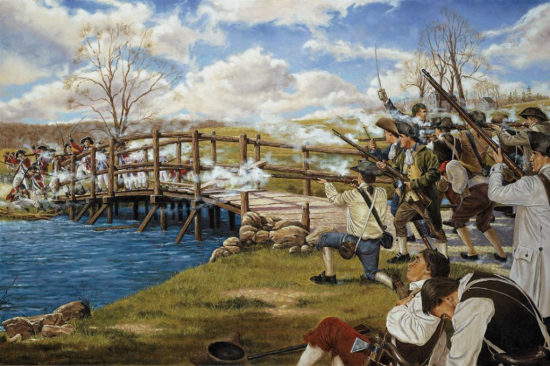









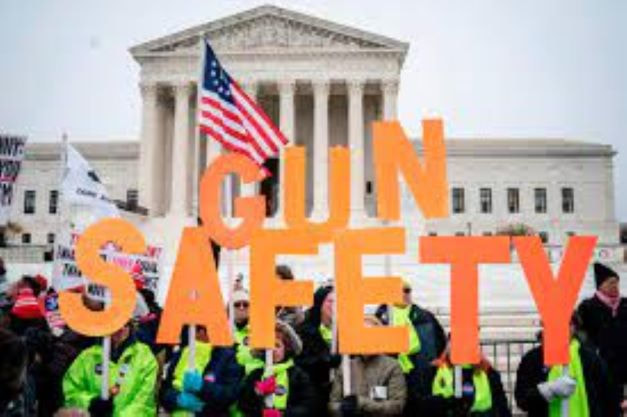

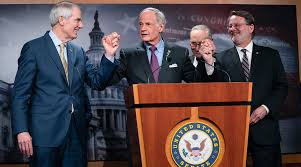











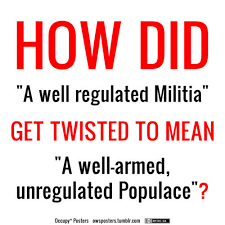



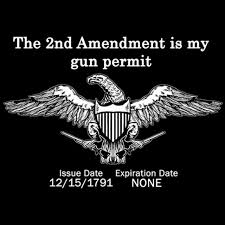
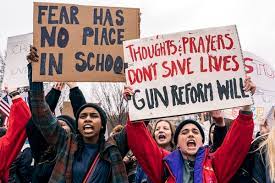

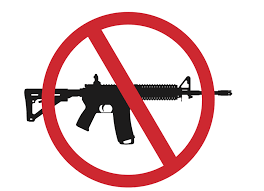

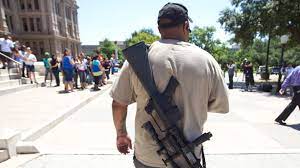
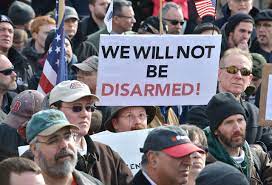
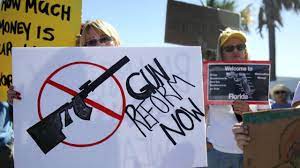



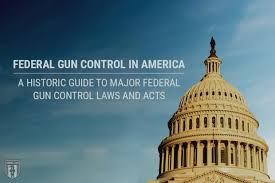




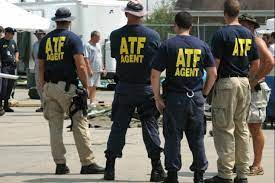

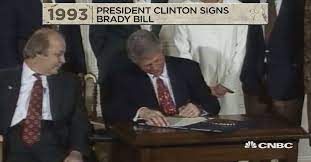
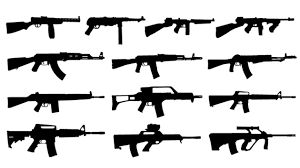



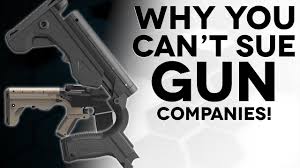
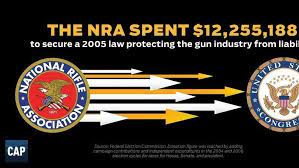




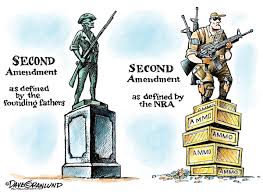
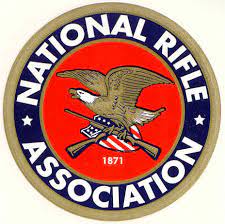



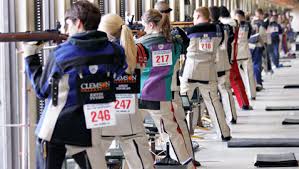

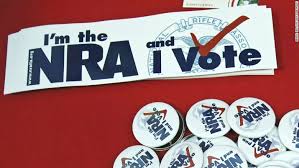
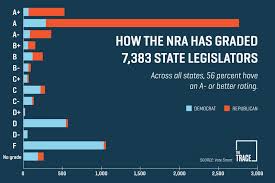



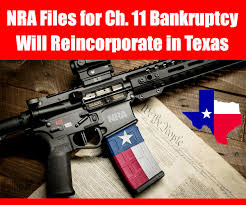


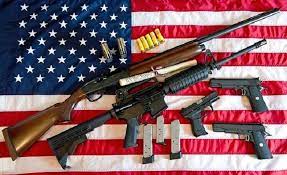


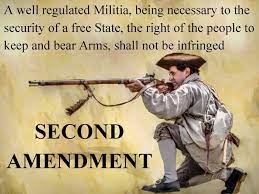
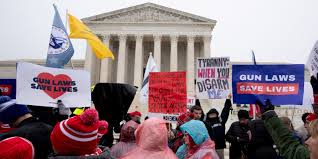



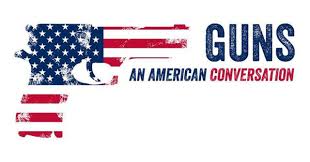

 RSS Feed
RSS Feed